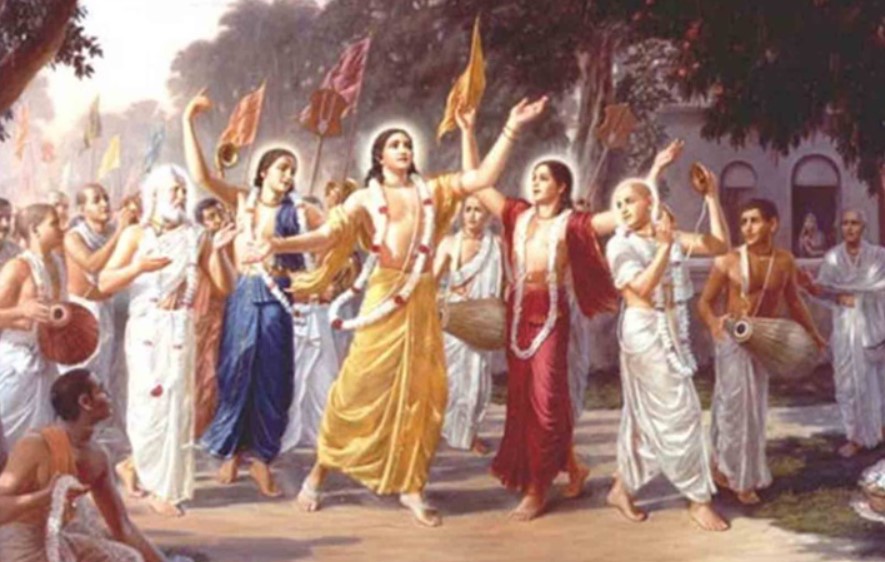
The Bhakti Movement, which stressed mystical union of the individual with God, was initiated in South India by popular saint poets called Alvars, who represented the emotional side of Vaishnavism, through collective songs called Prabandhas.
It declined in the 10th century AD, but was again revived as a philosophical and ideological movement by Acharyas like Ramanuja, whose disciple Ramananda took it to North India.
South India: Shiva and Vishnu
North India: Rama and Krishna
The real development of Bhakti took place in South India between the 7th and the 12th centuries. The Bhakti saints came usually from the lower caste. They disregarded caste, encouraged women to join and taught in the local vernacular language.
They considered that God has either a form (Saguna) or was formless (Nirguna).
TUKARAM (AD 1598-1650)
He was a contemporary of Shivji, the greatest Marathi Bhakti poet and his views are similar to that of Kabir. Great devotee of Vithal, a form of God Vishnu.
RAMADAS (1608-1681)
He was the spiritual guru of Shivaji. Established ashrams all over India. He wrote Dasabodha, a didactic work, which gave advice on all aspects of life.
GURU NANAK (1469-1538)
Founder of Sikh faith in India.
He was born in Talwandi, now Nankana Sahib to a Khatri family. He composed hymns and sang them with the help of a rabab.
He laid emphasis on one God. By repeating his name with love and devotion, one could get salvation without distinctions of caste, creed and sect. He was against idolatry, undertaking pilgrimage and other ritualistic conducts.
In course of time, his teachings gave rise to Sikhism.
Nanak began the practice of community kitchen or Guru-ka-Langar.
He named the formless God as Akal Purush.
His teachings are compiled in the Adi Granth.
Vallabhacharya (1479-1531)
He emphasised on the worship of Krishna as an incarnation of the almighty God.
Lived in the court of Krishnadeva of Vijayanagara.
He taught that there was no difference in Atma and Paramatma. By means of Bhakti, one can get salvation and merge in him. He founded the Pushti sect.
Ramananda (15th Century)
The founder of Bhakti Movement in North India.
He discarded caste rules and included among his disciples, men of all castes.
He was greatly influenced by the teachings of Ramanuja.
Among his disciples were Raidas, the cobbler, Kabir the weaver, Dhanna the farmer, Sena the barber and Pipa the Rajput.
Kabir (1440-1510)
He was a weaver.
Represented Nirguna Bhakti tradition. His followers organised themselves as Kabir Panthis.
His teachings contained Dohas, which are sung till today.
He was not merely a Bhakti poet, but also a social reformer. He spoke in the language of a common man. He emphasised on simplicity of the religious practice be it Brahminism or Islam.
He advocated the Bhakti marga and dedication to a formless supreme being.
Chaitanya (1486-1533)
Born in Naida district of West Bengal.
Regarded as the founder of modern Vaishnava Sect of Bengal.
He preached during the reign of Sultan Alauddin Shah of Bengal and Gajpati, ruler of Orissa. He died in Puri. His biography is Chaitanya Charitmala.
Philosophy of Chaitanya was called Achityabhedaveda.
His disciples considered him as the incarnation of Krishna.
Surdas (1483-1563)
Disciple of Vallabhacharya and devotee of lord Krishna and Radha. He wrote Sur Survali Sahitya Ratna and Sursagar (belonged to Saguna School.)
Tulsidas (1532-1623)
Born in a Brahmin family in Varanasi and belonged to the Ram Bhakti cult of Vaishnavism. He wrote Ramcharitmanas, Gitawati, Kavitawali, Vinay Patrika etc.
